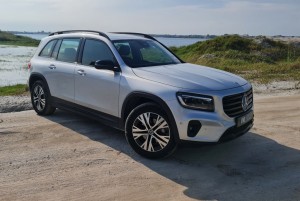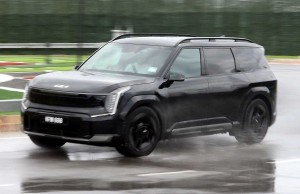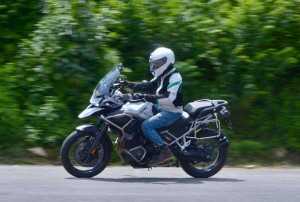Auto makers seeking to design the motion-sickness-proof car
By DPA | 28 January 2020
COLOGNE: It hits some people the moment the car pulls out of the driveway. Others feel it only when they start to read in the car.
Travel sickness can affect one to two thirds of all people with children between the ages of six and twelve being more susceptible than adults.
Car engineers say the solution lies somewhere between the design of the car's underbody and the ideal driving style.
According to chassis specialist Ludger Dragon at Mercedes-Benz, travel sickness often occurs when the chassis creates low frequencies of around 0.3 hertz.
"We therefore set the natural frequency of all our suspensions between 1 and 1.5 Hertz, which prevents motion sickness in advance," the expert says.
At a natural frequency of 1 hertz, the car cushions very comfortably, whereas at 1.5 hertz it feels more taut.
"The suspension needs to be adjusted to prevent the car from shaking too much, which is unpleasant for passengers," Dragon says. Even after driving over a big bump, the car should shake just once.
Meanwhile at auto supplier ZF, engineer Florian Dauth and his colleagues are researching prevention as well as automated countermeasurements.
Programming a smooth autonomous ride
Thinking ahead to a time when autonomous driving will give passengers more time for reading, working and watching TV during the ride, Dauth says the need to counteract car sickness will become even more important for self-driving cars.
"New systems using artificial intelligence will analyse driving maneuvers that cause symptoms of motion sickness in the passenger in order to adjust the subsequent driving technique," he says.
In order for a car to be able to drive on its own in a way that prevents motion sickness, the car needs to learn a certain driving style.
This means the car needs to be able to adjust things like steering and braking style, as well as springs and dampers during the ride, to improve the passenger's well-being.
What you feel vs what you see
Travel sickness occurs when the information coming from the equilibrium organ, located in the inner ear, does not match the visual information received by the eye. In the car, this often happens when passengers are reading during the ride.
"The body senses something different from what the eye sees," says Professor Daniel Strauss a neuropsychologist reasearching how brains work during car rides.
"It cannot classify the information it receives and reacts similar to when the body is poisoned: nausea, cold sweat and a rapid pulse can occur."
Motion sickness only slightly depends on speed, according to neurologist Hubertus Axer. Abrupt changes in direction, such as those that occur on mountain routes, have a greater impact.
If you don't want to wait for autonomous driving to be perfected, which analysts say could take until 2040, Axer recommends looking straight ahead - never a bad idea in a car.
Reviews

6.8
Mercedes-Benz GLB 200: Measured versatility

MG5: Slick and comfortable cruiser

8.2
Kia EV9: Prime cut

8.0
Triumph Tiger 1200 GT Pro: High adventure on two wheels

8.0
Honda Civic Type R (FL5): Ride on the wild side

Mitsubishi Xpander facelift: Expanding the reach

First drive of Geely Galaxy E5

8.2
Honda XL750 Transalp: Rising to the challenge
Videos

Aveta VTM 250; Affordable & Road Legal Adventure Bike

Nissan to launch affordable Vehicle to Grid technology from ...

Aveta VTM 250 hits Malaysian roads
